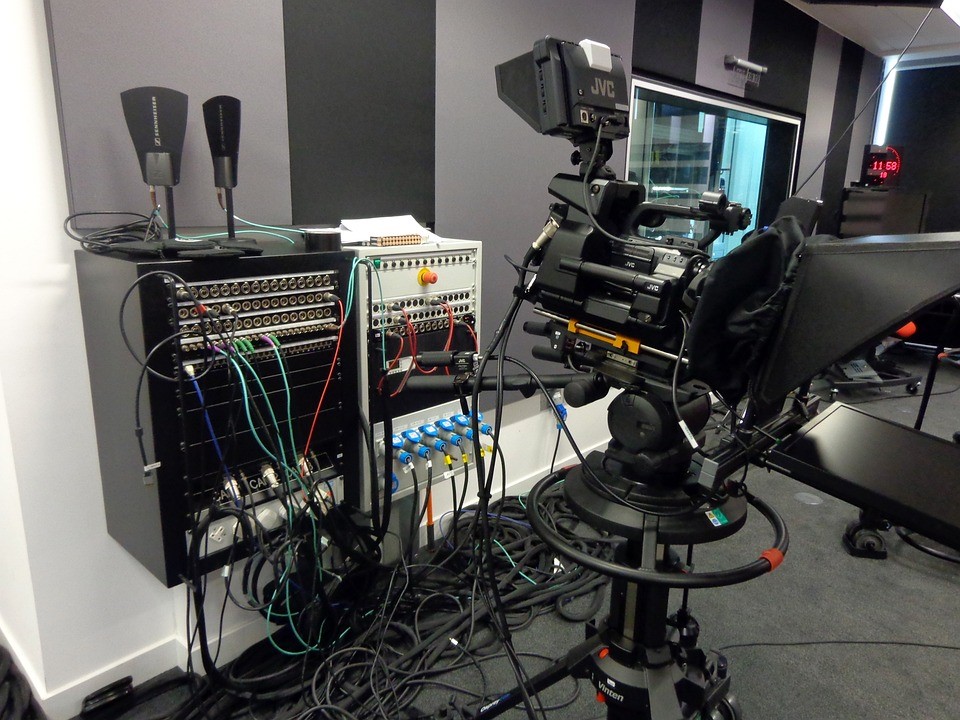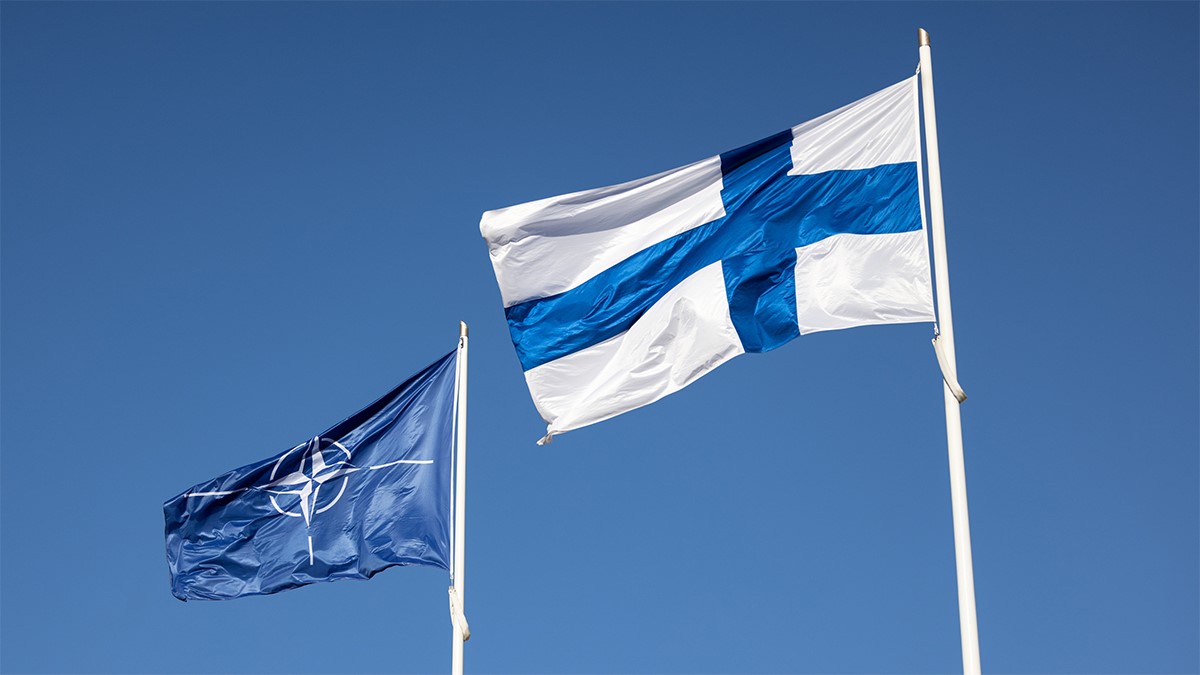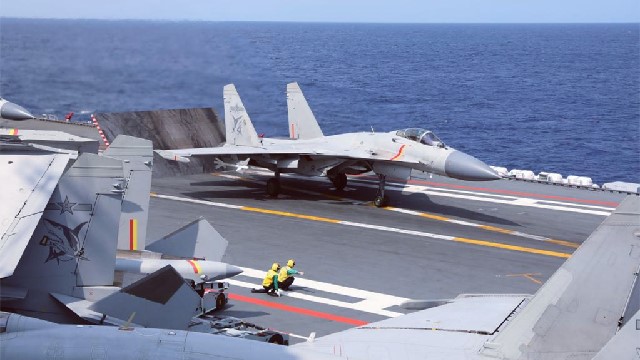Watch our latest TV program at https://rumble.com/v2j8imo-the-american-political-zone-april-18-2023.html
Our Latest TV Program


Watch our latest TV program at https://rumble.com/v2j8imo-the-american-political-zone-april-18-2023.html

The Arctic is heating up, but not in the way you might expect this spring. China’s Polar Silk Road, also known as the Northern Sea Route (NSR), is the subject of a new joint working group between China and Russia. TASS is reporting that at the recent summit meeting China agreed to help Russia finance development of a new Arctic route. Putin views it as a way to obtain the resources he needs while also deepening the Russo-Chinese relationship into one solidly allied against the West. According to Paul Goble of the Jamestown Foundation, however, “…it is becoming increasingly obvious, even in Russia at least among experts, that China’s plans are fundamentally at odds with those of the Kremlin and that these differences, along with China’s development of railway routes south of Russia through Central Asia and the Caucasus, mean that Beijing is more a competitor than an ally vis-à-vis Moscow in the transit sector.”
The long-term beneficiary, it appears, will be China. What is most concerning about the deal is that Russia in the near future could choose to exacerbate tensions between itself and the West to signal Beijing that Moscow needs its cooperation in supporting Russian troops in the Arctic to counter Western influences there. Fondsk.ru reports this week that this could mean that Xi Jinping must cooperate with Vladimir Putin to enable China to pursue its geoeconomic and geopolitical goals in the Arctic.
With Russian military resources stretched thin due to the war in Ukraine, Putin could decide to risk initiating a military conflict with the West in the Arctic region. Goble argues that the only resource Russia has to keep China in line is to militarize the issue. Over the last five years, Russian specialists on the Arctic and China have repeatedly warned the Kremlin that the two countries’ agenda are not the same and that China is consistently outplaying its Russian counterparts.
China’s position is that the sea route through the Arctic must be open to all nation-states and not under the control of a single country. This is exactly opposite Russia’s position, which insists that the NSR is part of Russia’s strategic patrimony. In recent years Russia has attempted to obtain international recognition of large swaths of the Arctic Ocean as its own based on its reading of undersea maps that it says include its economic exclusion zone. This is not unlike what China has proposed in its South China Sea territorial claims. On April 13, a commentary by Moscow analyst Dmitry Nefedov suggested why Moscow might be inclined to play up the military angle to keep China on its side. Goble says that Nefedov strongly implies that “Moscow must consider that possibility for at least two reasons: On the one hand, China has nominally cut back its use of the NSR because international shipping insurers are no longer prepared to sell Beijing policies for its ships that do utilize the route… On the other, China wants Russia’s backing on Beijing’s insistence of a large exclusion zone in the South China Sea, even as the Chinese refuse to recognize Russian claims to such a zone in the Arctic.”
China could use Russia’s support as tensions over Taiwan heat up and second, Moscow will have every reason to remind China that it needs help in the Arctic to ensure that the Bering Straits and the sea lanes around Wrangel Island remain open to Chinese shipping. Nefedov also argued this week that since Russia is running out of money it risks losing what Moscow says is a key factor in Russian national security. He points out that some fear China will look at Moscow as a steppingstone toward its goal to become the dominant global hegemon. Last month the Jamestown Foundation reported in its Eurasian Daily Monitor that Putin has no way to stop China from building a new railway, financed by barter arrangements, that travels deep in Russian territory in the Far East. Due to finances, Moscow this week announced a major cut to the expansion of the Baikal-Amur Mainline (BAM) railway. This route is one that was expected to expand China-Russia trade. Without it, there will be a bottleneck hurting cross-border trade between the two states. Despite China’s attempt to publicly remain friendly to Russia, tensions are mounting.
If needed, China has additional options to cooperating with Russia to gain access to trade routes. Beijing is rapidly laying down track across Central Asia that will allow it to ship goods to the West bypassing Russia and any sanctions concerns over countries doing business with Russia. China is moving into Russia’s areas of influence in Central Asia. Putin finds himself in a position where there is little he can do to alter the course of China’s expansion and influence, except to create conflict in the Far north.
Daria Novak served in the U.S. State Dept.
Photo: Pixabay

The Republic of Karelia is integral to checking expansion of the Western alliance according to leaders inside the Kremlin. Outside Russia few people recognize how much the country’s northwesternmost region presents challenges for Moscow. After Finland decided to join the North Atlantic Treaty Organization (NATO), Putin looked at transforming Karelia into a second Kaliningrad-like oblast. Earlier, following the Winter War of 1939-40, the Lutheran dominated region had been split in two with Finland ceding Russia the eastern part of the Karelian province and Finland retaining the west. The Finnic ethnic groups living there are indigenous to the historical region of Karelia although many live inside Russian territory.
As a potential source of military power, Russian Karelia could be used to check any Western alliance moves into Scandinavia or the Arctic. “…in the event of a crisis, it could prevent NATO from severing the single-track rail line connecting central Russia and the Kola Peninsula, where a large portion of Russia’s strategic arms are located,” says Paul Goble of the Jamestown Foundation. It may, however, be an overreach that sparks the centrifugal forces in the North that Moscow fears.
In January Russian Defense Minister Sergei Shoigu announced Russia’s intent to expand the Russian army there over the next several years. With Finland joining NATO, Russia’s border with the Western alliance has grown by more than 745 miles. Shoigu says this would involve the formation of a new Russian army corps of some 100,000 men in Karelia. Goble points out that Artur Parfenchikov, Russian head of the Karelian government, and Russian analysts, such as Vladimir Klimanov, head of the Moscow Center for Regional Policy, are “upbeat about this possibility.” Klimanov suggests in the publication Rueconomics.ru that an army corps in Karelia would become “a driver of economic growth” in the depressed region of 528,000 people.
Finnish military expert Petri Mäkelä, however, counters it saying he doubts Moscow can achieve its objective as the existing infrastructure in Karelia is in poor shape and the republic has lost many men in Putin’s war in Ukraine. Karelians, in general, tend to hold anti-war and anti-military attitudes that add to Moscow’s challenge in the region. Earlier this year Karelian activists argued that they don’t believe that Moscow will provide promised funds to help economic development in the region. Instead, they see the move to increase Russian soldiers in the area as one designed to create the conditions needed for a final homogenization of the republic and the Karelian Finnic people.
This week in the Russian online publication Region.expert, one analyst points out that the populace in the Karelian region is concerned that what Putin’s forces are doing in Ukraine could be done to them. In the last 14 months alone Karelia’s economy has contracted by more than 10 percent, which is five times as much as the rest of the Russian economy. Putin has not sent the region economic help and the people are growing angry. By last summer anti-war activism was rampant in the area, with some even creating a Facebook page to announce their opposition to the war in Ukraine and lack of compensation to Karelians whose incomes have suffered. Russia’s Wagner Group refuses to recruit there, despite the widespread poverty from which they typically get their enlistees. It is out of fear of finding no recruit willing to commit to the war, notes Goble. Russian propagandists also have given up on the area.
Many Karelians have decided to exit the eastern portion of the republic and head for Finland. The result is that today fewer than six percent of all republic residents are ethnically Karelian. Moscow refuses to recognize the language spoken in the area, further infuriating the people. Goble says this makes them the only autonomy in Russia without the titular nationality language. “Moscow’s tendency [is] to treat them as if they are Finns rather than a nation in their own right,” notes Goble. Moscow views the indigenous people of Karelia as close to secessionists. If Moscow does go through with its plans to stage a large army there, it could heighten regional tensions and bring Karelia closer to war. Many in the area were outraged that Moscow is not only attempting to move its soldiers there but also pushing to get the Karelians themselves to bear most of the cost of those occupying forces. It may end up the final blow to what stability remains in the area.
Daria Novak served in the U.S. State Dept.

Finland became the 31st member of the NATO Alliance on April 4. “On this very day, in 1949, the Washington Treaty, NATO’s founding treaty, was signed in Washington and it is hard to imagine a better way of celebrating our anniversary than to have Finland becoming a full member of the Alliance,” said the alliance’s Secretary General, Secretary General, Jens Stoltenberg.
Finland provides a substantial boost to NATO. It substantially adds to the amount of territory bordering Russia, in a region where three of the most threatened of the alliance’s members, Latvia, Estonia and Lithuania exist. It adds its modern and substantial armed forces to the NATO alliance, including 280,000 wartime strength personnel, modern equipment, including Leopard 2A6 tanks, F35 fighter jets, and other significant equipment, and a substantial defense budget. It’s 700 howitzers, 700 heavy mortars and 100 multiple rocket launchers gives it the largest artillery capability in Western Europe.
In testimony to the Senate Armed Services Committee in June, Celeste A. Wallander, Assistant U.S. Secretary of Defense for international security affairs stated that “Putin’s invasion of Ukraine caused a seismic shift in public opinion in both countries, and the legislatures of both countries quickly debated and ratified a motion to join the 30-nation alliance. Both Finland and Sweden are ready to contribute to alliance defense now. Finland maintains general conscription and has a well-manned and trained reserve that can be called up quickly, which is imperative since Finland shares a long border with Russia. Finland’s location on the Baltic Sea, diplomatic experience with Russia and advanced capabilities make it an asset to the alliance
Wallander added that “Finland spends more than 2 percent of its [gross domestic product] on defense, and possesses unique military capabilities and expertise, particularly operating in the arctic environment.”
If negotiations are successful, Finland will soon be joined by Sweden. The U.S. Dept, of Defense notes that Finland and Sweden would provide additional security and stability in Europe. The two Baltic nations already have close bilateral defense relationships with the United States, and have close working relationships and military interoperability with NATO militaries.
Wallander noted that “The fact that Sweden and Finland petitioned to join the defensive alliance is a sign of how much the security environment has changed with Russia’s unprovoked invasion of Ukraine. Both nations have been partners with NATO for decades, but really saw no need to join the treaty organization. Sweden’s accession into NATO would bring “a first rate and rapidly growing military with a principled foreign policy that ardently defends democracy and human rights. Sweden also maintains a world class defense industry. Sweden’s military expertise in the Arctic and undersea environments would substantially advance alliance capabilities.”
At the April NATO meeting of foreign ministers, other key matters were discussed, headlined by Putin’s invasion of Ukraine.
An issue that continues to be a controversy within the Alliance is the amount of each nation’s contribution. Secretary General Stoltenberg wants to have a “more ambitious defense investment pledge where we regard 2% of GDP for defense not as ceiling but as a floor, a minimum that we need to spend more in a more dangerous world on our security.”
Reflecting the accelerating global threat to NATO nations, the foreign ministers also discussed security challenges emanating from the Middle East and North Africa, the importance of increased defense investments, and NATO’s Indo-Pacific partnerships.
On that issue, NATO’s Asia-Pacific partners, including New Zealand, Australia, Japan, and South Korea were present at the meeting. Stoltenberg noted that “Security is not regional, security is global. What happens in Europe matters for the Indo-Pacific, for Asia. And what happens in Asia matters for Europe… when you see that China and Russia are coming more and more closely, that they stand together, work together, it makes it even more obvious that we need to stand together with our partners in the Indo-Pacific.”

The current “woke” Pentagon leadership has adopted and force-fed policies that weaken the morale and capabilities of America’s armed forces. Rather than allowing our fighting men and women to concentrate on deterring Russia, China, Iran, North Korea and terrorists, they, under Biden’s leadership, have made military preparedness a secondary consideration, emphasizing instead political partisanship.
Senator Marco Rubio (R-Fl) and Rep. Chip Roy (R-Tx) have produced a deeply disturbing report, “How Political ideology is weakening America’s Military.”.
On February 5, 2021, shortly after Biden became President, Defense Secretary Lloyd Austin signed a memorandum directing all service members and DoD civilian employees to conduct a “one-day ‘stand- down” to discuss extremism in the ranks with their personnel.
Rubio and Roy observed that foreign adversaries like China and Russia loved the stand-down. Their view was simple: the stand-down sowed further divisions in the United States and allowed them to tell their people that America’s government is a failure. Chaired by Democrat Jack Reed, the Senate Committee on Armed Services’ (SASC) bipartisan report on the annual National Defense Authorization Act (NDAA) points out that this is “a case rate of .005 percent, one service member out of every 21,000.” The Biden Administration’s “Countering Extremist Activity Working Group” found that “cases of prohibited extremist activity among service members were rare.” In fact, in a force of more than 2.1 million active and reserve forces, there were only 100 cases.
The SASC report goes on to note that more than 5,359,000 personnel hours were spent on the extremism stand-down ordered by Secretary Austin. The SASC report did not mince words on this absurd working “Spending additional time and resources on extremism in the military is an inappropriate use of taxpayer funds, and should be discontinued by the [DoD] Immediately.”
This man who was in charge of the CEAWG was a rabid partisan who routinely denigrates conservatives.
This weakening of the armed forces may continue long after Biden leaves office, since he has mandated teaching race hate in the service academies. The Report found that “The Biden Administration wants to indoctrinate a new generation of military leadership at the U.S. Service Academies with Critical Race Theory.”
One example: An admiral told midshipmen at the Naval Academy that they need to read How to Be an Antiracist – a Marxist book that teaches that “the only remedy to past discrimination is present discrimination,” that capitalism is racist, and that people by virtue of their race are inherently oppressive or privileged.
Biden is not content to merely weaken the military through promoting racial division. The report notes that “Focusing on what is different among us, rather than that which unites us, only serves to foster division and discontent among service members. We need look no further for evidence of this than the recent egregious example of an attempt to use taxpayer money and DoD property to host a drag queen story hour for children at the library on Ramstein Air Force Base in Germany to promote ‘inclusivity’ during pride month’.”
Rational opponents of those seeking to abuse the military for political goals are subjected to swift retribution. The Biden Administration has a disturbing track record of punishing those who object to woke ideology and giving license to those who agree with it. It promulgates a strict oppressive standard for those who share its opinions but no consequences for those who toe the party line. This breeds resentment and allows loyalty to an ideology, rather than to competence, or the Constitution, to determine success in our military.
The emphasis on politics over defense has produced a crop of leaders who have replaced traditional values of obedience to civilian authority and combat competence with politics. The report notes that “General Mark Milley admitted he had ‘directly and intentionally undermined the will of the sitting President of the United States, promised to leak highly classified information to the People’s Republic of China that would endanger the lives of American service members, and injected himself inappropriately into the nuclear chain of command.” Miley faced no punishment for his misdeeds.
Photo: DoD

Our nation’s motto used to be “E Pluribus Unum,” meaning out of many, one. Different points of view, different ethnicities, different faiths came together in a melting pot to form a uniquely American and a truly wonderful society in an unprecedented experiment. That society hasn’t always been perfect, it has made many missteps, but it strives to constantly improve, and it has indeed drastically improved.
But for some, the melting pot that brought Americans together has been replaced by what former New York City Mayor David Dinkins liked to call the “gorgeous mosaic,” in which what was once an attempt to have a unified nation has been downgraded into a warring collection of tribes separated by race, gender, and anything that disunites Americans from one another.
As a result, the core unifying concepts of America have become subjected to challenge by an intolerant faction. Individuality, the sanctity of the Bill of Rights and the Constitution, and the right of the American people to their own culture have been under constant attack.
There is a new national motto promulgated by that intolerant faction. That motto is “Don’t.”
Don’t bring up history, such as how the socialism so beloved by the Left and the uninformed generally ends in tyranny and ruined economies. Don’t confront college students with points of view they may disagree with. Don’t point out the obvious, such as a president who takes cash for no services from his nation’s worst enemy isn’t fit to serve. Don’t question the (official version of) science. Don’t question the logic of keeping recidivist criminals out of jail. Don’t object to the nonsense of saying a man should be allowed to compete in women’s sports or be allowed to use the ladies’ room. Don’t object when the federal government conspires with social media to censor news stories. Don’t disbelieve reporters who say that burning buildings, looting stores, and attacking passers-by is a “peaceful protest.” Don’t protest when the Department of Justice describes parents who want a say in their children’s education, or Christians who believe in traditional values as “domestic terrorists.”
Those who question any of the above will be called a fascist homophobic racist misogynist by both the biased media, and subjected to threats of violence by poorly taught university students and the armed wing of the intolerant faction, Antifa and its numerous unofficial adherents.
Unlike so much else that has been unique in the extraordinary experiment that is America, the intolerance movement bears a sharp resemblance to the extremist movements of the past century. Intolerant groups in several nations overthrew existing governments by using verbal and physical violence to intimidate those who opposed them, and went on to establish nightmare regimes. From the Russian Bolsheviks to the Nazi Gestapo, we have seen political intolerance grow into totalitarian governments repeatedly.
As mayors who subscribe to intolerance have taken control of the nation’s great cities, including New York, San Francisco, Chicago, Los Angeles, Portland and others, these once magnificent metropolises have seen their economies weakened, their citizen’s safety imperiled, and their residents flee to more traditionally American states. Government budgets have swelled but basic services have deteriorated. Schools in those beleaguered locales have failed to adequately instruct pupils. Police officers have retired or transferred elsewhere. Businesses large and small have fled in unprecedented numbers. Far too often, priority has been given to non-American illegal immigrants over the needs of the citizenry. The abomination of providing $400 a night hotel rooms to illegals while homeless veterans continue to suffer is an affront to common sense and common decency.
There is no mystery on how to resolve these dilemmas. Reject the verbal and physical violence perpetuated by the intolerant faction, and return to the principles that made America the greatest political success in human history.
Illustration: Pixabay

One, two, three, or eleven….
How many children are born into the average Indian family depends heavily on the region in which the family resides and the level of that state’s economic development. This month India’s total population will surpass that of China making it the most populous country on earth, according to demographic experts at the United Nations. China first became the most populous country in 221BC when Qin rulers unified the territory. Although it lost the title during the height of the Roman Empire, and again for a short period during the British rule in India, it appears that China’s “One Child Policy” has doomed its future generations to long-term secondary status. India, a democracy, reformed its more extreme population control policies in time, long before China recognized its downward trajectory and relented on its draconian rules. Although India’s population curve is flattening like that of many developed countries, it appears to have escaped the dire demographic future facing China.
“This demographic milestone, however, masks dramatically divergent trajectories inside India, with fertility rates varying sharply from state to state,” says Gerry Shih and Karishma Mehrotra in a Friday Washington Post story. In Tamu Nadu, India’s southernmost state, the population rate is similar to that of the United States and Sweden. Families have an average of 1.8 children. The area is known for its factories, car manufacturing plants, and iPhones. The story is quite different in northeast India’s agrarian Bihar state where women have an average of three children and 40% marry as teenagers.
India’s bifurcation between north and south, rural and urban, and small and large families has transformed the country into two very different looking places and frustrated Indian leaders and policymakers. The demographic gap has grown larger over the last 40 years. Today, Indian leaders are addressing the issue.
In the southern region there are more high paying jobs which help provide an improved social status for women and increase the average family’s wealth and living conditions. There is better access to family planning services, too. “The India of the south already resembles East Asia. It’s actually in the early stages of aging. But the Hindi heartland is still very much booming,” says Arvind Subramanian, India’s chief economic adviser between 2014 and 2018. He sees the divergence between north and south as an opportunity for India to apportion its federal spending to provide jobs for the poor in less developed areas. The result, he argues, will grow the Indian economy.
Within the next seven years India is expected to overtake Germany’s economy in size. The European state still faces a gender gap in salaries with women making almost one-third less than men, despite its 1.58 birthrate and developed economic status. India is facing a similar situation. Economic modernization in southern India in the late 1980’s flourished. By 1990’s fear of a population bomb in the southern states of Tamil Nadu and Kerala had ended as the region dropped below the replacement rate of 2.1 children per family. by 2021, all of India dropped to a rate similar to that of the United States, which has 1.8 children in an average family. India’s population problems are easing. It is not expected to experience a decrease in total population until after 2060. In comparison, it is expected that China’s population by that same time will be less than half of what it is today and with a higher percentage of it retired and not actively contributing to economic production.
Gerry Shih and Karishma Mehrotra note that Poonam Muttreja, executive director of the nonprofit Population Foundation of India, says “Where governance has been good, where women’s education and literacy are better, where public health services are better, you’ll see naturally lower population growth rates.” India’s richer states also pay women to use IUD’s and be sterilized. The argument is that this encourages a woman to become educated rather than married at a young age. Is it working? A 2021 national family survey indicates that in the wealthier states 84% of women are literate, compared to 55% in the poorer northern state of Bihar. The gender preference gap is also narrowing as Prime Minister Modi’s administration created a large campaign to discourage sex-selection abortions.
Today 19.2 percent of married Bihari women are employed outside the home. The government sees education as a major part of the effort to reduce poverty in the future and expand the economic wealth across the country. Cultural change regarding attitudes toward family size takes time, something China ran out of several years ago. Although conservative values still dominate northern India, it appears that there is some hope the government’s message is getting through as family size has decreased over the last five years. Closing the North-South economic gap may be creating short-term contentious domestic politics, as workers in the south dislike their tax dollars leaving the region. In the long run, however, India’s decision to reduce poverty in the north and improve education for women bides well for aiding India’s modernization.
Daria Novak served in the U.S. State Department
Photo: Pixabay

Practice makes perfect, or so the saying goes….
When it comes to the US Navy SEALs, their philosophy is “We expect to lead and be led. In the absence of orders I will take charge, lead my teammates and accomplish the mission.” Successful interoperability depends on enacting this type of philosophy among our military personnel and units. It permits military the flexibility in selecting the best individual for a task and leads to a high percentage of reports to the Pentagon stamped “mission accomplished.” China may reverse engineer, indigenously design, and own advanced weapons systems, but the People Liberation Army (PLA), its navy, and air force lack the political culture, real-time battle experience, and the know how earned and practiced by America’s military elite. There are, however, differing opinions in Washington about China’s real intentions leading up to next year’s presidential elections in the US and Taiwan.
This week Beijing is attempting to intimidate Taiwan with its “Joint Sword” exercise in response to Taiwan’ President Tsai Ing-wen’s recent US visit and meeting with House Speaker Kevin McCarthy in California. It is the largest rehearsal of a future invasion of Taiwan since the August 2022 PLA exercise practicing the blockade of Taiwan. While Xi Jinping may not have selected what option to use to take back Taiwan, this week’s military exercise sheds light on what China is and is not capable of in the near future, despite its recent provocative behavior. Ely Ratner, assistant secretary of Defense for the Indo-Pacific, at a Thursday event at the Hoover Institution, argued that China won’t invade Taiwan due to the high cost it would incur. He added “Deterrence is real; deterrence is strong.” While admitting that China is the only country with the capability and intent to overthrow the world order, he noted that in the past 12 months the US and America’s allies have had a regional “breakthrough year for alliance and partnerships” in countering PRC military and territorial ambitions.
Japan has increased its military spending and Washington and Manila have signed an agreement to establish four new sites for the deployment of US forces. Ratner also pointed out that Australia, the United Kingdom, and the US have made progress on a technology sharing agreement which will further strengthen cooperation in the region, more co-development, and co-production activities “that make our defense industrial bases more compatible.” At the same time, the US is expanding its regional exercises to increase security and allied cooperation and offset any Chinese military aggressiveness in the Indo-Pacific.
China’s August 2022 exercise tested PLA joint force operations by employing coordinated use of space, cyber, air, army and naval forces and rehearsed firing ballistic missiles in the waters surrounding Taiwan. It served as one element of Beijing’s Taiwan Invasion Strategy joint landing campaign. Some analysts in Washington suggest that China’s aim with these exercises is to ensure it can neutralize Taiwanese ground troops and allied air forces. Other military analysts argue that China still is behind on information dominance and just beginning the real work to integrate an overall invasion strategy and joint logistics.
Xi Jinping may be open to hearing from the Central Military Commission that they are ready to execute the final order to launch an invasion of Taiwan, but the ground truth dictates a different reality. HE will be facing off with joint forces from a number of Asian nations, along with the United States’ military. Ratner says the US and its allies will not be deterred by Xi’s speeches. “We will sail, fly, and operate” in international waters and airspace. He adds that “We’re focused on readiness.” Last year Defense Daily reported that the initiative by the Quad countries, made up of the US, Australia, Japan, and India, is providing flexibility and provides Pacific countries the ability to work together to ensure stability in the region without forcing any to make a choice between the US and China.
The situation between China and Taiwan is more complex than comparing the size of each state’s military. Admittedly, Xi is ramping up the rhetoric and his military’s aggressive behavior, but that doesn’t tell the whole story. China has not faced a shooting war since its short border conflict with Vietnam in 1979. Xi Jinping and the Chinese leadership employ long-term strategic thinking in foreign policy. The work of the Quad and other Asian states over the last year appear to have dulled China’s urge to take imminent military action. Add to this that Russia’s war in Ukraine also has taught China lessons about what happens when a “special military action” becomes prolonged. Beijing’s reaction to Speaker McCarthy’s recent meeting with Taiwan’s president was tame compared to a year ago when then House Speaker Nancy Pelosi visited Taiwan
Hopefully, Xi is considering the events and conclude the cost to take Taiwan through the use of military force is too great a risk.
Daria Novak served in the U.S. State Dept.
Photo: Chinese aircraft carrier training

Listen to our latest radio program at https://drive.google.com/file/d/16PldUgDEFPaAx4cuGluzrvW5MnZUd1aB/view?ts=64370b8b

Watch our latest TV program at https://rumble.com/v2huerc-the-american-political-zone-april-11-2023.html